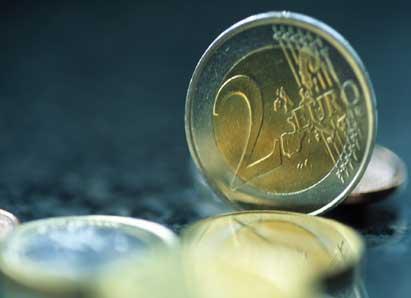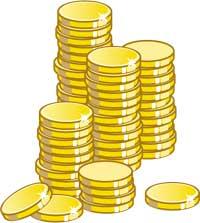Green coins green coins
2001/05/01 Ares, Felix Iturria: Elhuyar aldizkaria
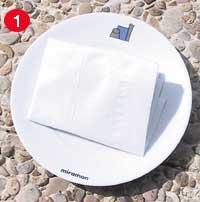
For this you need three repones, some new, some tiny and golden. You will also need a dish, the paper used in the kitchen and vinegar.
Fold the paper and position it in a saucer as you can see in photo 1. Then, on paper, place three coins of 5 pesetas.
Take the vinegar and pour into the dish until the paper is completely wet (see photo 2).
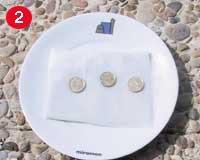
Now you have to wait 24 hours, but you will notice that the result is as seen in figure 3. That is, the coins have become green.
The most surprising, however, is that the coins have been redefined in their entirety, both at the bottom of the vinegar and at the top of the edge. However, what is seen in the upper and lower parts is totally different. On the edge and on the top a greyish green layer has been formed, while on the bottom, directly on the vinegar, you can see bright green areas and areas with the original metal exposed.
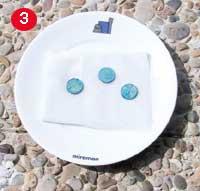
The explanation consists of the components of the coin, since they are made with the so-called “gold of the north”, an alloy with high copper content. You already know that vinegar is acid, specifically acetic acid, that when mixed with copper forms a compound of green color. The latter is called copper acetate or cupric acetate. At the bottom of the coins, some particles of this compound come together forming small crystals. These crystals have a high intensity green color that shine when they are powered by light.
Copper acetate is its current name, but this greyish-green powder has had several names throughout history. For example, cupritsa, garding or crystal of Venus.
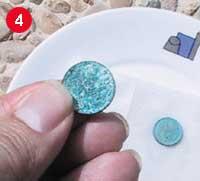
With this experience you have learned, among other things, that there are reactions that completely alter the color of things. We hope you enjoyed it.

Gai honi buruzko eduki gehiago
Elhuyarrek garatutako teknologia



